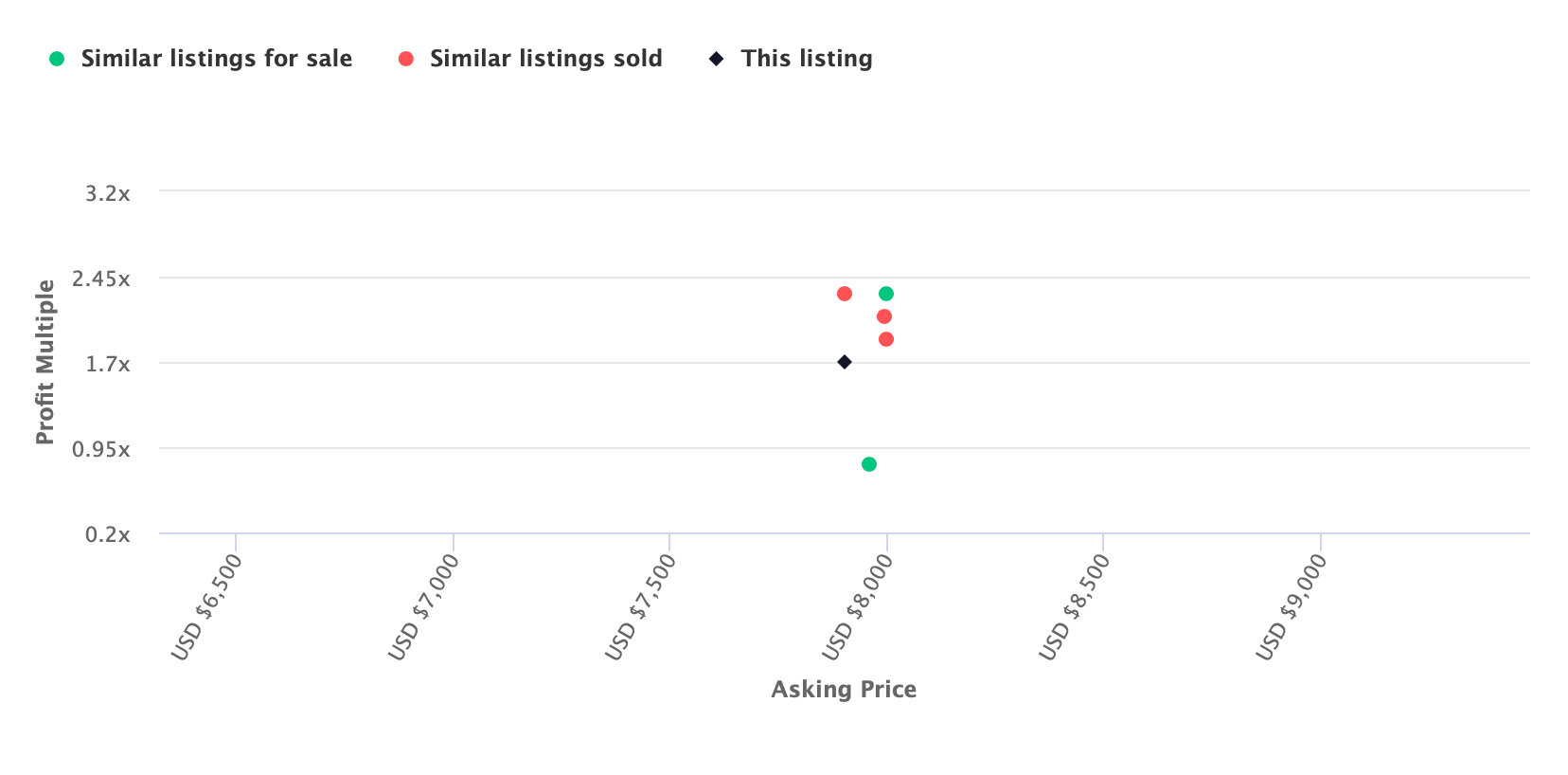Company Valuation: An Overview for Founders and Owners
As a founder, I was confronted with the need to estimate a company's or project's value many times already. This article aims to equip founders and owners with the knowledge and tools to do so competently.

This article contains the essential tools and knowledge of half a semester of my MBA's finance lecture. I want this article to be insightful and actionable for founders and owners and therefore specifically focus on valuation methods for private companies so that it is applicable to a startup or small company. The article assumes that you possess basic accounting knowledge, but also covers foundational core concepts when needed.
Contents
Why You Need This
As a founder, owner, CEO, or CFO, (...), you will encounter events that require a valuation of your company. Such an event could be founding your company with equity to be split between (co-)founders and eventual outside investors, raising capital in a seed- or series-N round, selling your company, introducing company shares in your employee compensation plan, and many others.
As a founder and owner, I already had to use some of these valuation methods way before I formally learned them. In my case, these mainly were the following two events:
- When preparing our merger to Akenza, we needed a valuation of Rieglia (my first startup) so that we had a baseline for equity negotiations. We used a perpetuity value-based valuation as an anchor and then negotiated without much math involved.
- When setting up the shareholders agreements for Lightray (my second startup), we needed a valuation in case any of the founders wants to leave or sell his shares. We used an average of equity value and perpetuity value in conjunction with a ruleset for estimating future revenue.
It worked out in both cases, but I would've loved a simple overview like this 😉.
Some Basics
This article assumes that you possess basic accounting skills and knowledge such as knowing what a balance sheet is, how an earnings statement is structured, or the basics of cash flow calculation. Still, some terms are frequently used and crucial for the presented methods so I'll quickly explain them below:
Entity vs. Equity
A company's balance sheet covers the whole entity, meaning equity plus debt. Simply speaking, equity is "your money" i.e. an owner's piece of the cake whereas debt is "other people's money" i.e. bank loans or other forms of value loaned to the company.
Mind that if you're running a small startup, your stake in the company may be both equity (your shares) and debt. Debt could be your current account or a private loan to the company – money the company owes you.
Cost of Capital / Expected Returns / WACC
In order to be profitable, a business' earnings must at least cover its cost of capital. The cost of capital not only includes debt interest (e.g. 4.5%) but also the expected or desired returns (return on equity) by the owners (e.g. 20%) based on opportunity cost compared to similar investments. Therefore, even if your company belongs solely to yourself, the company does have a cost of capital – the returns that you're expecting.
The correct determination for all company sizes and capital structures is the WACC whereas the expected "fair" return on equity of any publicly traded company can be calculated using the CAPM.
Tax Shield
Debt interest is an expense and therefore paid before a company's EBIT becomes taxable earnings. The tax shield effect recognizes that the capital structure (debt vs. equity) influences the company's taxable earnings where a higher debt-to-equity ratio leads to lower taxes. This is represented within the WACC, sometimes also referred to as WACCtax. You won't find this explicitly further down the article, but implicitly whenever the cost of capital is required.
Sidenote: Languages and Accounting Standards
I learned all of this in German and by using Swiss accounting laws (Obligationenrecht, OR) and standards. When putting the knowledge into writing, I found that an exact translation may exist but its meaning may differ in other, more commonly used accounting standards such as IFRS and GAAP. Hence, this short summary to bridge the gap in case you find yourself in the same situation:
- DE: Brutto-Substanzwert -> EN: Enterprise Value
- DE: Netto-Substanzwert -> EN: Equity Value
- DE: Ertragswert -> EN: Perpetuity Value
Value vs. Cost
Value describes a company's worth, which may or may not get paid in a transaction. Cost is the actual price paid for the transaction. Generally speaking, value acts as a baseline and anchor when negotiating cost.
In case you find other terms in need of clarification, please let me know. Also, I've found Investopedia's search pretty useful for such topics.
Simple Valuation Methods
Let's begin with valuation methods that are easy to understand and simple to calculate. These are based either on the company's current value or the company's future revenue expectations.
Revenue- and Profit Multiples
Revenue- and profit multiples are as simple as it sounds: A company's value is determined by a multiple of its (stable, normalized) annual revenue or yearly profit. The multiplier differs by industry, product, business model, growth potential, current market rates, and other subjective factors.
$$ \begin{align} \text{Value}_{\text{Revenue}} &= \text{Revenue} \times M \\ \text{Value}_{\text{Profit}} &= \text{Profit} \times M \end{align} $$Where \(M\) is the multiplier. For some industries, \(M\) may be a multiplier of 0.5 whereas for others it may be 20 or more. I suggest searching the web for benchmarks within your industry if this method is of further interest to you.
Mathematically, this model is pretty much identical to the perpetuity value presented below but easier to grasp and a bit more subjective in its application.
☝️Revenue- and Profit Multiples in Practice
I see and hear revenue- and profit multiples a lot. I think one of the method's main appeals is its simplicity: It can be understood with only minimal financial knowledge and easily benchmarked against other comparable investments.
A notable mention of this is Flippa: A marketplace to buy and sell digital assets (blogs, apps, websites, ...) to a varied audience. Flippa is using both Revenue Multiples and Profit Multiples as one of the main KPIs shown on a listing:

Perpetuity Value
A company can also be valued by treating it as a perpetual annuity (a perpetuity), meaning a never-ending stream of profits. It is calculated by using the expected stable long-term profit, an eventual growth factor, and the expected cost of capital.
$$ \begin{align} \text{Value} &= \frac{\text{Profit}}{\text{Cost of Capital}} \\ \text{Value} &= \frac{\text{Profit} \times (1+g)}{\text{Cost of Capital } - g} \end{align} $$Where \(g\) is the optional growth factor, e.g. 0.05 for a 5% annual growth rate.
In established businesses, the expected stable long-term profit usually is the average of the last three to five years with extraordinary events (special tax return, a large one-time investment, ...) subtracted. In a fast-growing business like a startup, this number is up to your imagination and negotiation skills 🚀.
By choosing the appropriate cost of capital, you also define which asset to calculate the perpetuity for: The whole company (i.e. entity) by using the WACC, or the equity by using the return on equity. An example of the advanced calculation that also includes projected growth can be found here.
☝️Perpetuity Value in Practice
Perpetuity values are simple to calculate and, from what I know, often used in combination with equity value calculations for SME valuations. Their basic assumption of never-ending cash streams will obviously never hold true, but one can never entirely predict the future anyway 🙂. A similar method with the same aim that is widely used, is the discounted cash flow (DCF) method presented further below.
Enterprise Value and Equity Value
The enterprise value determines a company's total current asset value used to generate its operational output. If a company is structured and invested very simply, its enterprise value probably almost equals its book value. This also implies that no value is given to any form of cash flow or profit.
If some company assets are not used for its operations (e.g. stock investments, keeping a safety pile of cash, the owner's apartment, ...) these non-operational assets must be subtracted from the book value to form its enterprise value. Cash and cash equivalents are generally subtracted as they can be used to pay back debt.
The enterprise value is calculated either indirectly from the book value or directly from the equity value using either one of these formulas:
$$ \begin{align} \text{Value}_{\text{Enterprise}} &= \text{Value}_{Book} - C \\ \text{Value}_{\text{Enterprise}} &= \text{Equity} + \text{Debt} - C \end{align} $$Where \(C\) equals all non-operational assets, cash, and cash equivalents as explained above.
A more comprehensive explanation can be found on Investopedia.
🇨🇭Swiss Specialties: Hidden Assets & Deferred Tax
If your company accounting is in accordance with Swiss laws (Obligationenrecht, OR) instead of any true-and-fair-view-based accounting standard, you'll probably have hidden assets and deferred taxes missing on your balance sheet.
To calculate the enterprise value correctly, you must add hidden assets, and subtract deferred taxes when doing so. Deferred taxes are simply the expected tax when liquidating hidden assets. In practice usually calculated using half of the expected tax rate.
Equity Value
As the name suggests, the enterprise value applies to the whole enterprise. However, what usually is of interest to the shareholder is the value of a company's equity i.e. what the shareholder actually owns. Now that we've covered the calculation of enterprise value, equity value is an easy one: It simply describes the value of the total equity i.e. the enterprise value minus all debt.
$$ \begin{align} \text{Value}_{\text{Equity}} &= \text{Value}_{Enterprise} - \text{Debt} \\ \text{Value}_{\text{Equity}} &= \text{Value}_{Assets} - \text{Debt} \end{align} $$A company's equity value usually also constitutes its liquidation value i.e. the money that would be generated by selling all the company's assets. Therefore, it acts as the lowest sensible baseline for any negotiation.
☝️Enterprise- and Equity Value in Practice
Using just the enterprise- or equity value alone isn't common in small-business practice as the methods lack a perspective on a company's current- and future revenue as well as future growth potential. However, these methods are used in combination with other methods, such as the perpetuity value, and then averaged with some weighting. When used alone, the fact that many companies ( e.g. software businesses) can create a lot of revenue on just a few (tangible) assets whereas asset-heavy companies may not necessarily create a lot of revenue must be considered wisely.
Advanced Valuation Methods
We are now introducing a more advanced concept: The time value of money. The methods presented below utilize present value calculations to value future cash flows accordingly.
Present Value Calculation
Money today is worth more than money tomorrow. Hence, far-future profits are worth less than near-future profits. The reasoning is that money can grow by investing it – and by not investing it, you'll encounter the opportunity cost of interest at a given rate. This concept is called the time value of money and it is the foundation of all present value calculations.
The act of calculating an amount's present value is called discounting. Discounting requires a discount rate (usually the cost of capital i.e. WACC or expected return on equity) and the periods to discount for (usually years). The future amount gets multiplied by the discount rate to determine its present value. I've put together a simple calculator to calculate the present value of a single future cash flow:
Present Value Calculator
Use the form below to easily calculate the present value of any future cash flow at a given discount rate.
Discounted Cash Flow (DCF) Method
The discounted cash flow (DCF) method currently is known as a best practice in company- and investment valuation and may also be referred to as net present value (NPV) after subtracting the cost of the investment. As you now understand present value calculations, you also understand most of the DCF method already.
The DCF method estimates the value of a company using its expected future free cash flows (FCF), which represent the cash flow that is available to the company's investors i.e. to repay creditors and pay out dividends and interest to investors. These values are then discounted to obtain their present value (PV). The method, therefore, requires a mid-term forecast of free cash flows (e.g. for the next few years) and then adds a terminal value so that the remaining future free cash flows exceeding the mid-term period are valued as well. The entire entity value is calculated as follows:
$$ \begin{align} \text{Value}_{\text{Entity}} &= \sum_{n = 1}^{N} PV(FCF_n)_n + PV(TV)_{N -1} \\ \end{align} $$The formula may look a bit complicated, but it can easily be broken down. First, we can calculate the terminal value using the perpetuity value formula:
$$ \begin{align} TV &= \frac{FCF_{N-1} \times (1+g)}{WACC - g} \\ \end{align} $$Where \(FCF_{N-1}\) represents the last projection period's free cash flow and \(g\) the expected growth rate.
The terminal value must then be discounted to determine its present value:
$$ \begin{align} PV(TV)_{N-1} &= \frac{TV}{(1 + WACC)^{N-1}} \\ \end{align} $$In addition to using the formula, you could also use the present value calculator above, where the terminal value is treated as a future cash flow at the end of the mid-term period.
The total sum of all future free cash flows' present values can also be written individually as follows:
$$ \begin{align} \sum_{n = 1}^{N} PV(FCF_n)_n &= \frac{FCF_1}{(1 + WACC)^1} + \frac{FCF_2}{(1 + WACC)^2} + \dots + \frac{FCF_n}{(1 + WACC)^n}\\ \end{align} $$The final equity value (the company's valuation) is then calculated from the entity value as follows:
$$ \begin{align} \text{Value}_{\text{Equity}} &= \text{Value}_{Entity} - \text{Debt} - C \end{align} $$Where \(C\) equals all non-operational cash and cash equivalents.
☝️Discounted Cash Flow / Net Present Value in Practice
The discounted cash flow method currently acts as a worldwide best practice in company and investment valuation. It leads to a correct result from a mathematical standpoint but heavily relies on (whacky) assumptions about the future as cash flows are usually projected for many years ahead. It does require a bit of financial knowledge as discounting future values to present values may not seem intuitive, but the calculation should be easy to understand. If you're aiming for the "most correct" method, DCF is the way to go.
Economic Valued Added (EVA) Method
Lastly, we'll take a brief look at the economic value added (EVA) method. The EVA is not a pure valuation method, but also a controlling instrument in Value Based Management (VBM) and is also called Economic Profit. It measures the value a company generates from its assets (invested capital, IC) after subtracting the cost to finance these assets (cost of capital). Hence, it determines the value that is generated in addition to "just paying for capital" within a period. It is calculated as follows:
$$ \begin{align} EVA &= NOPAT - (IC \times WACC) \\ EVA &= IC(ROIC - WACC) \\ \end{align} $$Where
$$ \begin{align} ROIC &= \frac{NOPAT}{IC} \end{align} $$and
$$ \begin{align} IC &= \text{Equity} + \text{Debt} \end{align} $$The same calculation as with the DCF method is used to determine a company's value, but a period's FCF is exchanged for a period's EVA instead. Additionally, the company's invested capital (IC) must be added to the discounted future EVA and terminal value.
If you want to dive deeper into the calculation of EVA, I recommend this article.
☝️Economic Value Added in Practice
As far as I know, the EVA isn't really used for startup- and small business valuation. It is rather used as a management and compensation tool for sustainable value generation in contrast to short-term profit generation in larger companies. If you're interested in setting up management compensation plans, the EVA method may be something you want to look into.
Thank you for reading until the end. I hope this article equips you with the tools and knowledge that you need as a founder and/or owner of a startup or small business. I'd be very interested in what you think, so please let me know in the comments below or via email!
— Dominik






